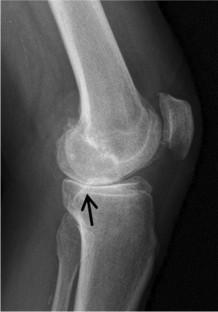International Orthopaedics ( IF 2.0 ) Pub Date : 2022-08-13 , DOI: 10.1007/s00264-022-05544-5 Constant Foissey 1 , Cécile Batailler 1 , Jobe Shatrov 2 , Elvire Servien 1, 3 , Sébastien Lustig 1, 4

|
Purpose
Anterior cruciate ligament (ACL) deficiency can be a consequence or a cause of femoro-tibial osteoarthritis (OA). Several studies have published satisfactory outcomes of unicompartimental knee arthroplasty (UKA) and combined ACL reconstruction despite its absence classically being considered a contraindication. A major challenge in the ACL deficient knee is obtaining appropriate gap balancing and limb axis. Robotically assisted UKA allows for precise control of these factors; however, it’s utilisation as a tool with combined ACL reconstruction and UKA has not been described. The purpose of this study was to evaluate the clinical and radiological outcomes of robotically assisted UKA with combined ACL reconstruction.
Methods
This was a retrospective single-centre study of ten patients operated by a single surgeon from 2016 to 2020. All surgery was performed using a cemented fixed bearing UKA prosthesis (Journey uni, Smith and Nephew®) (8 medial, 2 lateral) inserted with the assistance of an image-free robotic-assisted system (BlueBelt, Navio, Smith and Nephew®). All ACL reconstructions were performed using hamstring autograft. Clinical assessment included International Knee Score (IKS) score, Tegner score and patient satisfaction. Radiological assessment was performed to assess radiolucent lines, progression of OA in the other compartments, Hip-Knee-Ankle angle and Posterior Tibial Slope.
Results
There were eight females (80%), mean age was 57 ± 7 [48–70], mean BMI was 26 ± 3 [22–31]. The mean follow-up was 45 months ± 13 months [24–66]. Mean post-operative IKS knee and function score were respectively 96 ± 4.5 [88–100] and 93 ± 8.2 [74–100], mean Tegner score was 4.5 ± 1.4 [3–6]. Nine patients (90%) returned to sport; one patient (10%) was dissatisfied because of residual pain preventing a return to a desired level of sport. 100% of the radiological objectives were achieved. No radiolucent lines were seen at the last follow-up. There were two re-operations (20%) for stiffness requiring arthroscopic arthrolysis at two and three months respectively following surgery, with full recovery of the flexion at the last follow-up in both cases. No other complications were observed.
Conclusion
Robotic UKA associated with ACL reconstruction provides satisfactory early patient outcomes and accurate implant positioning. The first results in terms of return to sports were promising.
中文翻译:

机器人辅助单间室膝关节置换术和前十字韧带重建相结合是年轻关节炎膝关节的良好解决方案吗?
目的
前十字韧带 (ACL) 缺陷可能是股胫骨骨关节炎 (OA) 的结果或原因。几项研究已经发表了单间室膝关节置换术 (UKA) 和联合 ACL 重建的令人满意的结果,尽管缺乏传统上被认为是禁忌症。 ACL 缺陷膝关节的一个主要挑战是获得适当的间隙平衡和肢体轴线。机器人辅助 UKA 可以精确控制这些因素;然而,它作为 ACL 重建和 UKA 结合的工具的使用尚未被描述。本研究的目的是评估机器人辅助 UKA 联合 ACL 重建的临床和放射学结果。
方法
这是一项回顾性单中心研究,研究对象为 2016 年至 2020 年期间由一名外科医生对 10 名患者进行的手术。所有手术均使用骨水泥固定轴承 UKA 假体(Journey uni、Smith and Nephew®)(8 个内侧、2 个外侧)进行,其中插入有无图像机器人辅助系统(BlueBelt、Navio、Smith and Nephew®)的协助。所有 ACL 重建均使用自体腿筋移植进行。临床评估包括国际膝关节评分(IKS)评分、Tegner评分和患者满意度。进行放射学评估以评估射线可透线、其他区室中 OA 的进展、髋-膝-踝角度和胫骨后坡度。
结果
其中有 8 名女性 (80%),平均年龄为 57 ± 7 [48–70],平均 BMI 为 26 ± 3 [22–31]。平均随访时间为 45 个月 ± 13 个月 [24-66]。术后平均 IKS 膝关节评分和功能评分分别为 96 ± 4.5 [88–100] 和 93 ± 8.2 [74–100],平均 Tegner 评分为 4.5 ± 1.4 [3–6]。九名患者(90%)恢复运动;一名患者 (10%) 因残留疼痛而无法恢复到所需的运动水平而不满意。 100%实现了放射学目标。最后一次随访时没有看到射线可透过的线。术后两个月和三个月分别有两次因僵硬需要进行关节镜关节松解术的再次手术(20%),两次随访时屈曲度均完全恢复。没有观察到其他并发症。
结论
与 ACL 重建相关的机器人 UKA 可提供令人满意的早期患者治疗结果和准确的种植体定位。重返体育运动的初步结果是有希望的。










































 京公网安备 11010802027423号
京公网安备 11010802027423号